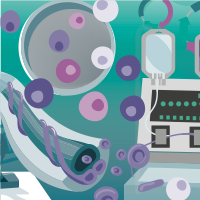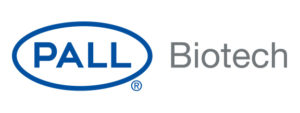Maximizing speed to market: flexibility benefits of single-use technology for gene therapy manufacture
Cell & Gene Therapy Insights 2020; 6(2), 281–287
10.18609/cgti.2020.038
“Gene therapy usually addresses small patient populations, so batch sizes tend to be small and relatively few in number. This is a ‘sweet spot’ for single-use technology.”
Q You have long been involved in the development and application of single-use technologies in biological manufacture. Why is this type of innovation so important in the gene therapy sector?
HP: The gene therapy sector is booming. On a daily basis you hear about new manufacturing sites being constructed and new drugs moving along the funnel in terms of clinical phases. Single-use technology is very well matched to this type of application, for several reasons.
Gene therapy usually addresses small patient populations, so batch sizes tend to be small and relatively few in number. This is a ‘sweet spot’ for single-use technology. In addition, the population the gene therapy segment is addressing is usually lacking any type of medication, which makes speed to market particularly important. Single-use technology allows you to plan and build facilities relatively quickly. It also allows you to retain flexibility until the last moment enabling last minute changes, and permitting a single factory to produce multiple types of gene therapy products with reduced risk of cross-contamination.
Q What are the key challenges gene therapy manufacturers may face with the design, assembly, and implementation of processes for single-use systems and facilities?
HP: Often the process has been largely developed in universities or hospitals, and not built with GMP-manufacturing- and process scale-up considerations in mind.
The other big issue with such a rapidly growing sector, particularly in the USA, is a lack of experienced workforce. When you are considering how you will implement new processes, you need to think about how it can be done efficiently and reliably, while ensuring regulatory compliance.
Q How has Pall Biotech sought to alleviate these issues, both collaboratively and in-house?
HP: Let’s look at the collaborative aspect first. I mentioned that one of the big issues is scale-up; how are you going to transfer a process which might have been designed in a hospital or university and make it reliable?
That’s why we have set up our process development services, which will allow us to industrialize both the development and manufacturing process. We will work with the initial provider or developer of the process to deliver a process that can then be transferred to the people who are going to manufacture it. We do this with tools which enable the scale-up required as the product moves through the clinical phases.
A second aspect is standardization. We are paying a lot of attention to the use of standard solutions and standard design, keeping mindful of the speed of implementation and supply chain aspects. Demand is huge, but the best service we can give to the industry is a standard system with standard technology, in order to ensure robustness and security in the supply chain.
Lastly, it is still very important to keep in mind that the technology needs to be a good fit for the gene therapy sector. That’s why we have developed the iCELLis® fixed-bed bioreactor, which has extremely good performance in the production of viral vectors. This type of unique technology is equally important to ensure that the yields required to support the growing market can readily be achieved.
Q Could you tell us about the Allegro Central Management System (ACMS)?
HP: It’s a development which started a few years ago, when we were really starting to grow significantly in single-use systems.
We realized that the way we were initially managing our competence was not sustainable, because we were dealing with big Excel spreadsheets and we had data being stored in different places – it was simply becoming too complicated.
We started developing the ACMS with the idea that it would be a web-based system where we would store all of the information related to our components. It has evolved over the years into a very complex but interesting system. We don’t just manage all the component information, but also our entire process, including engagement testing, and the enquiry process. We have an elaborate SUS design configurator which allows us to select the information from the components, as well from the junction test, ensuring we can make fit for purpose designs.
It’s an incredible system – and our end users are highly appreciative of it.
Q Could you walk us through how the ACMS works in practice in a single-use assembly project, highlighting the specific supply chain benefits its capabilities can bring?
HP: We store all project details in the ACMS. To some extent it’s very close to what the BioPhorum Operations Group (BPOG) Single-Use Systems User Requirements Specification (URS) is requesting, so we will have all the details we need related to the URS.
Next, we move to the design phase: we take the input from the URS and put it in the configurator. For example; temperature and pressure. As we design the system using the configurator, the configurator will only allow us to select components, which can operate within the design parameters. In addition, it will only allow us to use components where the engagement testing has been validated. However, there may be a case where we have a new application, and we have to assemble two components where the junction test has not yet been validated. In this case, the system will trigger us to run a new validation related to that junction test, and the design cannot be finalized and approved until the engagement testing has been fully validated.
As we are designing systems, for each component we pick we consider the lead time, the impact on cost and so on, so you see how the design is linked to supply chain issues. This allows ACMS to direct the user to what we call the preferred component, meaning the component is held in stock and has the strongest level of validation data.
Q How does the ACMS support standardization?
HP:The ACMS acts as a library of designs. It contains not only all the customized designs we have generated for our end users, but also all our standard designs. We have also built other tools into ACMS, including things like electronic signature software, such that the approval of designs is now handled electronically without having a hand-off using email. Everything we are doing within ACMS is really about using standard components, using standard process flows, and ultimately streamlining the whole business process.
Q Why are the ACMS’s capabilities relating to training facilitation so important for the gene therapy space?
HP:As I mentioned above, the lack of a robustly-educated workforce in this sector makes training crucial. If you are using a standard solution, you can also use standard assets for training. In particular there are web-based training assets such as training videos, e-training courses, e-knowledge checks and so on. All of these tools, which may already exist with the supplier, can be prepared up front and be implemented as you are validating the manufacturing site. This means that the end user doesn’t need to create their own training assets, and can instead leverage the experience and prior knowledge of the supplier.
Q You’re also currently involved in developing a regulatory portal – how will this further support end users?
HP: We are involved as a company in an industry working group on this topic, and the issue of how to provide transparency to detailed information on all of the components. This is something, which comes up on a daily basis. But here is the problem. we are managing thousands of components in order to build single-use systems.
The only way to be capable of addressing market demand is to build a regulatory portal, through which users can access information pertaining to these components. The aim of the regulatory portal is to address this requirement from the end users, provide transparency, and to be capable of supporting them on a 24/7 basis.
Q How and where do you expect to see further innovation in single-use technology development bringing benefits to gene therapy manufacture in the future?
HP: As discussed, more standard solutions is an obvious one. But the other thing to consider when creating reliable technology is automation. We all know that operator errors are often a major issue in manufacturing. I expect we will see the development of systems capable of being run in an automated way, reducing operator-dependence.
Another thing we have must always bear in mind is that whatever technology you’re developing, it needs to be fully scalable. This is especially important for gene therapy. At the moment we’re looking at the larger indications for gene therapy, but there will come a time when we tackle the market of personalized medicine, and this may require further miniaturization.
Q What will be the next steps for both Pall Biotech and the gene therapy sector as the development and integration of Industry 4.0 tools and practices continues?
HP: We will continue to develop and extend ACMS and will be looking at tools that can be used to improve facility design – such as virtual and augmented reality. We are using the Hakobio platform internally, and seeing how this can help beyond simply the facility design stage. Through the use of twin facilities, you can allow the end user to navigate in the plant before the plant is even constructed, allowing you to gain time ahead of implementation.
Training and capacity support can also benefit from the use of digital tools such as augmented reality. As we develop these individual platforms, we need to consider communication between the different tools and platforms the customer is using. Interlinked communication in digital systems will be very important going forward.

Authorship & Conflict of Interest
Contributions: All named authors take responsibility for the integrity of the work as a whole, and have given their approval for this version to be published.
Acknowledgements: None.
Disclosure and potential conflicts of interest: The authors declare that they have no conflicts of interest.
Funding declaration: The author received no financial support for the research, authorship and/or publication of this article.
Article & copyright information
Copyright: Published by Cell and Gene Therapy Insights under Creative Commons License Deed CC BY NC ND 4.0 which allows anyone to copy, distribute, and transmit the article provided it is properly attributed in the manner specified below. No commercial use without permission.
Attribution: Copyright © 2020 Pall Corporation. Published by Cell and Gene Therapy Insights under Creative Commons License Deed CC BY NC ND 4.0.
Article source: Invited
Podcast recorded: Feb 20 2020; Publication date: Apr 8 2020.




